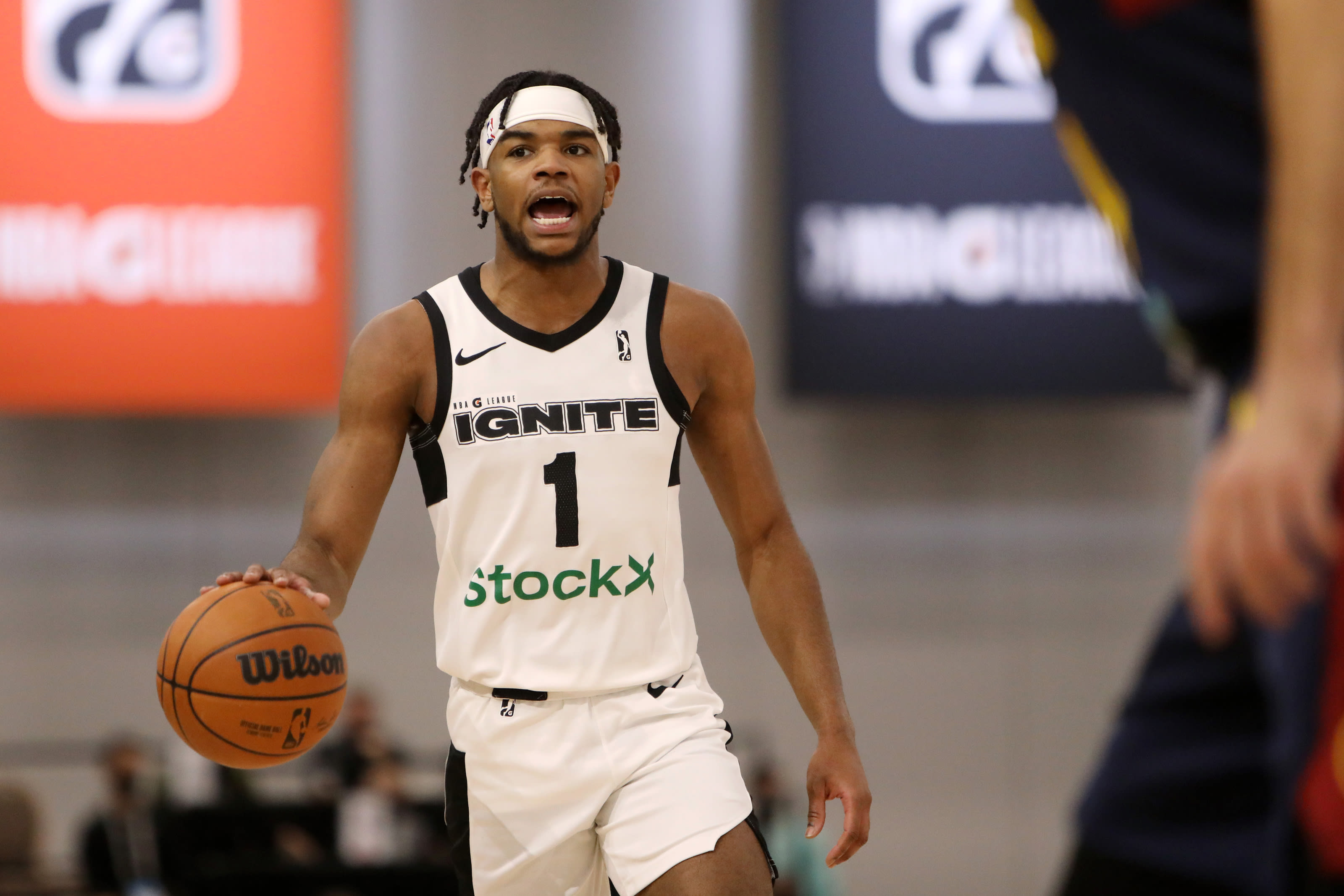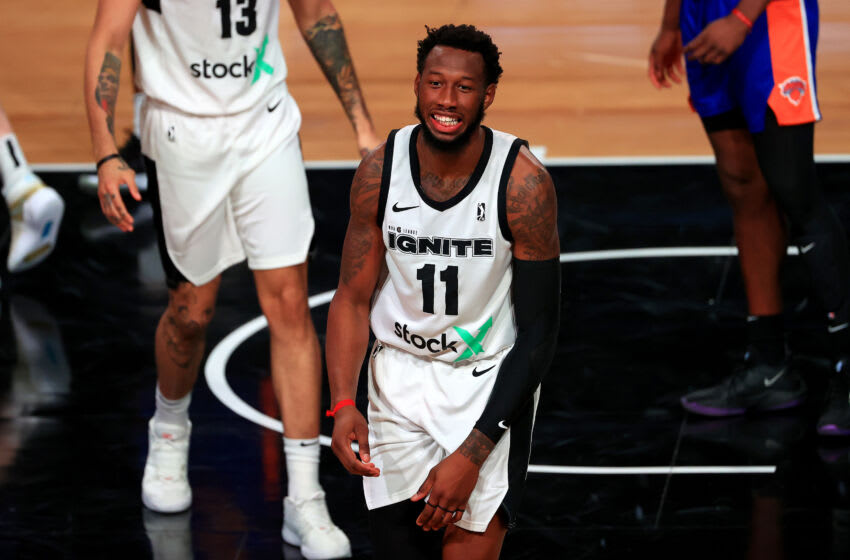Use your ← → (arrows) to browse

LAS VEGAS, NEVADA – DECEMBER 19: Jaden Hardy #1 of the G League Ignite advances the ball against of the Grand Rapids Gold during the NBA G League Winter Showcase at the Mandalay Bay Convention Center on December 19, 2021 in Las Vegas, Nevada, How the new NBA Rising Stars game format will help the G-League Ignite. NOTE TO USER: User expressly acknowledges and agrees that, by downloading and/or using this photograph, User is consenting to the terms and conditions of the Getty Images License Agreement. (Photo by Joe Buglewicz/Getty Images)
In 2006, David Stern implemented a new rule requiring players to be at least 19 years old and one year removed from high school graduation to declare for the NBA Draft.
Initially, this meant that most top high school players would go to college for a year before declaring for the draft, leading to a yearly flock of freshman “diaper dandies” who would show up to briefly terrorize college basketball before leaving for NBA riches.
However, alternative paths to the NCAA have developed. Prep basketball is big business, and players often want to earn money today without waiting a year.
The path from high school to the NBA has evolved immensely through the years
Brandon Jennings was the first big name to opt-out of college to play overseas and earn a paycheck. Although he did not play well in Europe (a tough transition for a scrawny 18-year-old, since leagues there are far more physical than high school or the NCAA), he was drafted 10th overall in the first round, proving the viability of the overseas path.
More and more players have taken that route, most notably LaMelo Ball. The sparkle and shine of guaranteed paychecks overseas is a strong draw.
The smell of untapped money has lured big-name investors like Jeff Bezos and Drake to their own solution – Overtime Elite. This program has selected a couple of dozen top high-school prospects and given them a substitute high-school experience: classes, dorms, and of course, basketball, with a focus on pro-level development. The players, some as young as 16, also sign six-figure contracts that earn them an income for multiple years.
Similarly, the NCAA has started to make its own case to lure top prospects. The introduction of Name, Image, and Likeness rules (forced by the Supreme Court against the NCAA’s wishes) allow college athletes to earn sponsorship and endorsement money in the hundreds of thousands of dollars or more range, with uncapped potential. It also offers the traditional college environment – a draw for many kids who yearn for that big-man-on-campus experience.
Use your ← → (arrows) to browse




